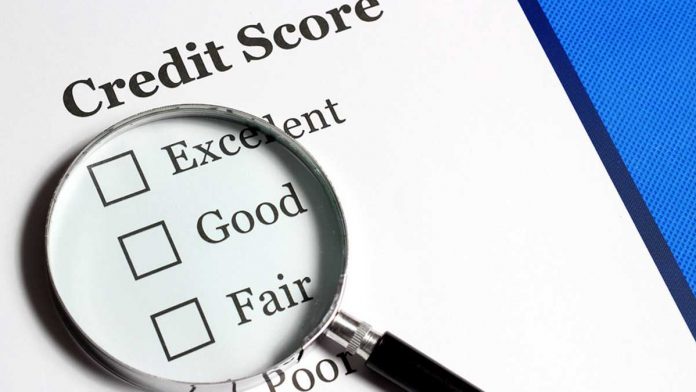Q: I’m a gay man in my 40s and I have struggled with credit card debt for years. Now that I’m making a decent income, I’m determined to get on a better path going into 2019. Can you please offer me some advice?
A: I’m sure other readers may have similar concerns, and I think it’s great that you’re making a commitment to take some positive steps to improve your situation going into the New Year. Here are some thoughts to get you started.
Yes, you CAN get out of debt
In America today, carrying some debt is unavoidable, and even desirable, for most households. But between mortgages, car payments and credit cards, many Americans find themselves over their heads — unable to dig out from under a growing debt burden that consumes an ever-growing portion of their resources.
The average U.S. household owes $16,748 in credit card debt, according to a 2016 study of American household credit card debt published on Nerdwallet.com. The study was based on an analysis of Federal Reserve statistics and other government data and represents the average balance of households that carry debt.
Credit card companies have made running up that balance deceptively convenient. What’s lost when you’re on that spending spree is the realization that paying off your debt can be costly, in terms of both cash on hand and your overall financial health.
Assessing your debt
How much debt is too much? The figure varies from person to person, but in general, if more than 20% of your take-home pay goes to finance non-housing debt, or if your rent or mortgage payments exceed 30% of your monthly take-home pay, you may be overextended.
Other signs of overextension include not knowing how much you owe, constantly paying the minimum balance due on credit cards (or worse, being unable to make the minimum payments), and borrowing from one lender to pay another.
If you find that you’re overextended, don’t panic. There are a number of steps you can follow to eliminate that debt and get yourself back on track. Working your way out of debt will, of course, require you to adjust your spending habits and perhaps be more judicious in your spending.
Debt assessment at a glance
Here’s how you can build a clear picture of your debt situation:
• List all of your credit cards and how much you pay to them each month;
• List all of your fixed loans (such as car loans and student loans);
• List all the annual expenses you pay off with regular monthly payments (such as insurance);
• List your monthly mortgage or rent payment.
Once you are done, add them all up. That’s your total monthly debt load.
Begin with a budget
The first step in eliminating debt is to figure out where your money goes. This will enable you to see where your debt is coming from and, perhaps, help you to free up some cash to put toward debt.
Track your expenses for one month by writing down what you spend. You might consider keeping your ATM withdrawal slips and writing each expense on them until the money is gone. Hang on to receipts from credit card transactions and add them to the total.
At the end of the month, total up your expenses and break them down into two categories: Essential, including fixed expenses such as mortgage/rent, food, utilities, and non-essential, including entertainment and meals out. Analyze your expenses to see where your spending can be reduced. Perhaps you can cut back on food expenses by bringing lunch to work instead of eating out each day. You might be able to reduce transportation costs by taking public transportation instead of parking your car at a pricey downtown garage. Even utility costs can be reduced by turning lights off, making fewer long-distance calls, or turning the thermostat down a few degrees in winter.
The goal is to reduce current spending so that you won’t need to add to your debt and to free up as much cash as possible to cut down existing debt.
Three steps to reduce debt
Once you’ve got your budget settled, you can begin to attack your existing debt with the following steps.
1. Pay off high-rate debt first. The higher your interest rate, the more you pay. Begin with your highest-rate credit cards and eliminate the balance as aggressively as possible. For example, assume you have two separate $2,000 balances, one charging 20% interest, the other 8%, on which you can pay a total of 6% per month. If you were to pay 4% per month on the higher-rate card and 2% on the lower-rate card (which is typically the minimum monthly payment), you would pay $961 less in interest and make 18 fewer monthly payments overall than you would if you allocated 3% to each balance.
2. Transfer high-rate debt to lower-rate cards. Consolidating credit card debts to a single, lower-rate card saves more than postage and paperwork. It also saves in interest costs over the life of the loan. Comparison shop for the best rates, and beware of “teaser” rates that start low, say, at 6%, then jump to much higher rates after the introductory period ends. You can find lists of low-rate cards online from sites such as CardTrak.com and Bankrate.com.
If you can only find a card with a low introductory rate, maximize the value of that low-interest period. By paying off your balance aggressively, you will reduce the balance more quickly than you will when the rate goes up.
You can also contact your current credit card companies to inquire about consolidation and lower rates. Competition in the industry is fierce, and many companies are willing to lower their rates to keep their customers. Even a percentage point or two can make a difference with a sizable balance.
3. Borrow only for the long term. The best use of debt is to finance things that will gain in value, such as a home, an education or big- ticket necessities, like a washing machine or a computer, that will still be around when the debt is paid off. Avoid using your credit card for concert tickets, vacation expenses or meals out. By the time the balance is gone, you’ll have paid far more than the cost of these items and have nothing but memories to show for it.
By analyzing your spending, controlling expenses and establishing a plan, you can reduce — and perhaps eliminate — your debt, leaving you with more money to save today and a better outlook for your financial future. n
Jeremy R. Gussick is a CERTIFIED FINANCIAL PLANNER™ professional affiliated with LPL Financial, the nation’s largest independent broker-dealer.* Jeremy specializes in the financial planning and retirement income needs of the LGBT community and was recently named a 2018 FIVE STAR Wealth Manager as mentioned in Philadelphia Magazine.** He is active with several LGBT organizations in the Philadelphia region, including DVLF (Delaware Valley Legacy Fund) and the Independence Business Alliance (IBA), the Philadelphia Region’s LGBT Chamber of Commerce. OutMoney appears monthly. If you have a question for Jeremy, you can contact him via email at [email protected].
Jeremy R. Gussick is a Registered Representative with, and securities and advisory services are offered through LPL Financial, a Registered Investment Advisor, Member FINRA/SIPC.
This article was prepared with the assistance of DST Systems Inc. The opinions voiced in this material are for general information only and are not intended to provide specific advice or recommendations for any individual. We suggest that you discuss your specific situation with a qualified tax or legal advisor. Please consult me if you have any questions. All performance referenced is historical and is no guarantee of future results. All indices are unmanaged and may not be invested into directly. All investing involves risk including loss of principal. No strategy assures success or protects against loss.
© 2018 DST Systems, Inc. Reproduction in whole or in part prohibited, except by permission. All rights reserved. Not responsible for any errors or omissions.
*As reported by Financial Planning magazine, June 1996-2018, based on total revenues.
**Award based on 10 objective criteria associated with providing quality services to clients such as credentials, experience, and assets under management among other factors. Wealth managers do not pay a fee to be considered or placed on the final list of 2018 Five Star Wealth Managers.

